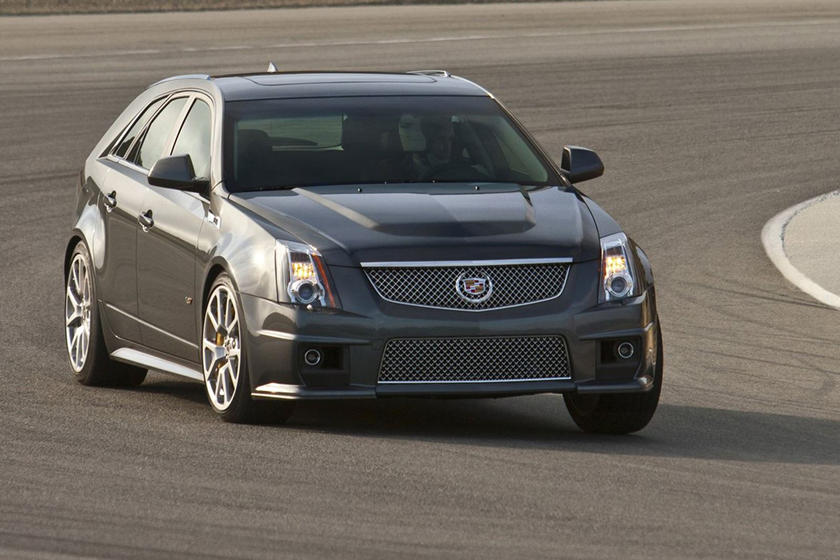Cadillac still can’t completely escape the stigma of being a second-tier luxury brand. It wasn’t always that way, of course. But Audi, BMW, Mercedes-Benz, and Lexus have conquered the luxury market, leaving little room for worthy competitors. Cadillac waited too long to get its act together and ditch old man land yachts in favor of competitive and fun to drive luxury cars. Even today it’s late to the luxury crossover market. And, unfortunately, even its latest sedans have not been as successful as Cadillac hoped.

The ATS sedan is gone after this year and the CTS and XTS aren’t far behind. Two all-new replacement sedans are coming soon. But there was one (now discontinued) Cadillac that checked all of the right boxes. It was powerful, fast, looked great and even offered much of the interior volume of a crossover. The CTS-V Wagon debuted for 2011, not long after the V6-powered CTS Wagon. The CTS-V Wagon was and still is an absolute beast. Like that generation’s CTS-V sedan and coupe, the wagon was powered by a slightly altered version of the C6 Corvette ZR1’s supercharged LS9 V8. Total output came to 556 hp and 551 lb-ft of torque. Power was sent to the rear wheels through a Tremec six-speed manual and a limited-slip differential.

For a certain group of enthusiasts, Cadillac created the perfect car. Problem was, that group was relatively small. The CTS-V sedan was already kind of a niche vehicle, more hot rod than track star when compared to, say, an F10 M5. Offering a wagon version only made it more niche, especially with the manual option. In fact, only 514 examples were built with three pedals and a short-throw shifter while the remaining wagons came with a six-speed automatic with paddle shifters. Needless to say, this power wagon was crazy fast. Zero to 60 mph took only 3.9 seconds (4.1 for the manual) while the quarter-mile run was done in 12 seconds flat at 118 mph.

It even offered Recaro seats, a panoramic sunroof, 19-inch chrome wheels wearing performance rubber, and the excellent Magnetic Ride Control suspension. There’s also 58-cubic-feet of cargo storage with the rear seats folded. To compare, the new XT4 offers 48.9 cubic feet. The CTS-V Wagon was everything a Cadillac should be and more. It has attitude. It’s unapologetically cool. It has a contagious personality that’ll make you forget fuel economy is a dismal 14 mpg combined. For better or worse, it also had little competition in the US. BMW hasn’t built an M5 Touring wagon since 2010 and even that wasn't sold in North America. The Audi RS6 Avant is still alive and well, but it too has never been sold stateside.

The closest competitor the CTS-V Wagon ever had was the mighty Mercedes-Benz E63 AMG wagon, but it cost thousands more. Cadillac originally priced its CTS-V Wagon at around $65,000; the E63 AMG Wagon set you back around $100k. You can’t argue the CTS-V Wagon was a killer deal. Sure its interior came with too much shiny black plastic trim. Overall build and material quality didn’t quite match the Germans, but that’s a price many were more than willing to pay. Perhaps the best thing the CTS-V Wagon represents was Cadillac’s willingness to take a chance with a vehicle that wasn’t mainstream. It wasn’t even mainstream for high-performance car buyers.

But it set Cadillac apart and gave it an identity again. It perfectly complemented the second generation CTS-V sedan and coupe. Today, both coupe and wagon are gone and the CTS sedan is on its way out permanently. That’s what happens when an automaker with all the right stuff produces badassery for the mainstream market.





No comments:
Post a Comment